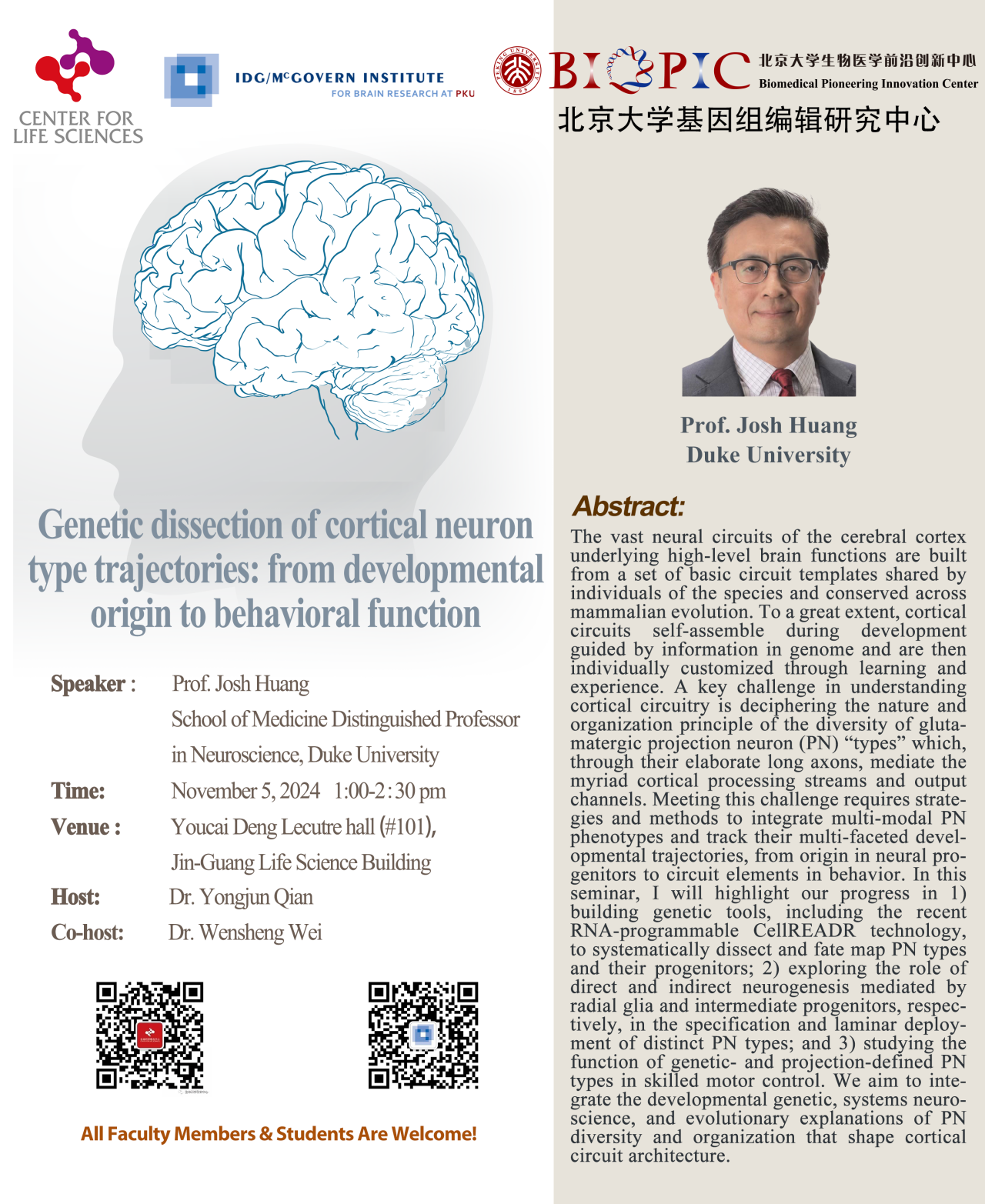
Theme: Genetic dissection of cortical neuron type trajectories: from developmental origin to behavioral function
Venue: Youcai Deng Lecutre hall (#101), Jin-Guang Life Science Building
Speaker: Prof. Josh Huang (Duke University)
Co-host: Dr. Wensheng Wei
Introduction to the speaker:
Josh Huang is the Duke School of Medicine Distinguished Professor in Neuroscience, as well as a Professor of Neurobiology, Professor of Cell Biology, and Professor of Biomedical Engineering at Duke University. His research focuses on the development and function of cortical circuits that underlie motor control and cognitive processing. Huang's research program integrates a variety of approaches, from genetic engineering to single-cell genomics, developmental neurobiology, imaging, electrophysiology, and behavioral analyses, with the goal of connecting fundamental neuroscience to the understanding and treatment of neuropsychiatric disorders. He earned his Ph.D. from Brandeis University in 1995 and was elected a member of the American Academy of Arts & Sciences in 2022.
Abstract:
The vast neural circuits of the cerebral cortex underlying high-level brain functions are built from a set of basic circuit templates shared by individuals of the species and conserved across mammalian evolution. To a great extent, cortical circuits self-assemble during development guided by information in genome and are then individually customized through learning and experience. A key challenge in understanding cortical circuitry is deciphering the nature and organization principle of the diversity of glutamatergic projection neuron (PN) “types” which, through their elaborate long axons, mediate the myriad cortical processing streams and output channels. Meeting this challenge requires strategies and methods to integrate multi-modal PN phenotypes and track their multi-faceted developmental trajectories, from origin in neural progenitors to circuit elements in behavior. In this seminar, I will highlight our progress in 1) building genetic tools, including the recent RNA-programmable CellREADR technology, to systematically dissect and fate map PN types and their progenitors; 2) exploring the role of direct and indirect neurogenesis mediated by radial glia and intermediate progenitors, respectively, in the specification and laminar deployment of distinct PN types; and 3) studying the function of genetic- and projection-defined PN types in skilled motor control. We aim to integrate the developmental genetic, systems neuroscience, and evolutionary explanations of PN diversity and organization that shape cortical circuit architecture.
Source: McGovern Inititue for Brain Research at PKU